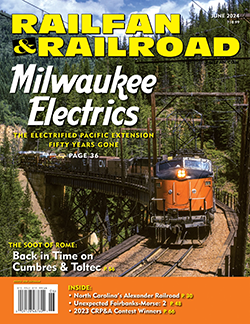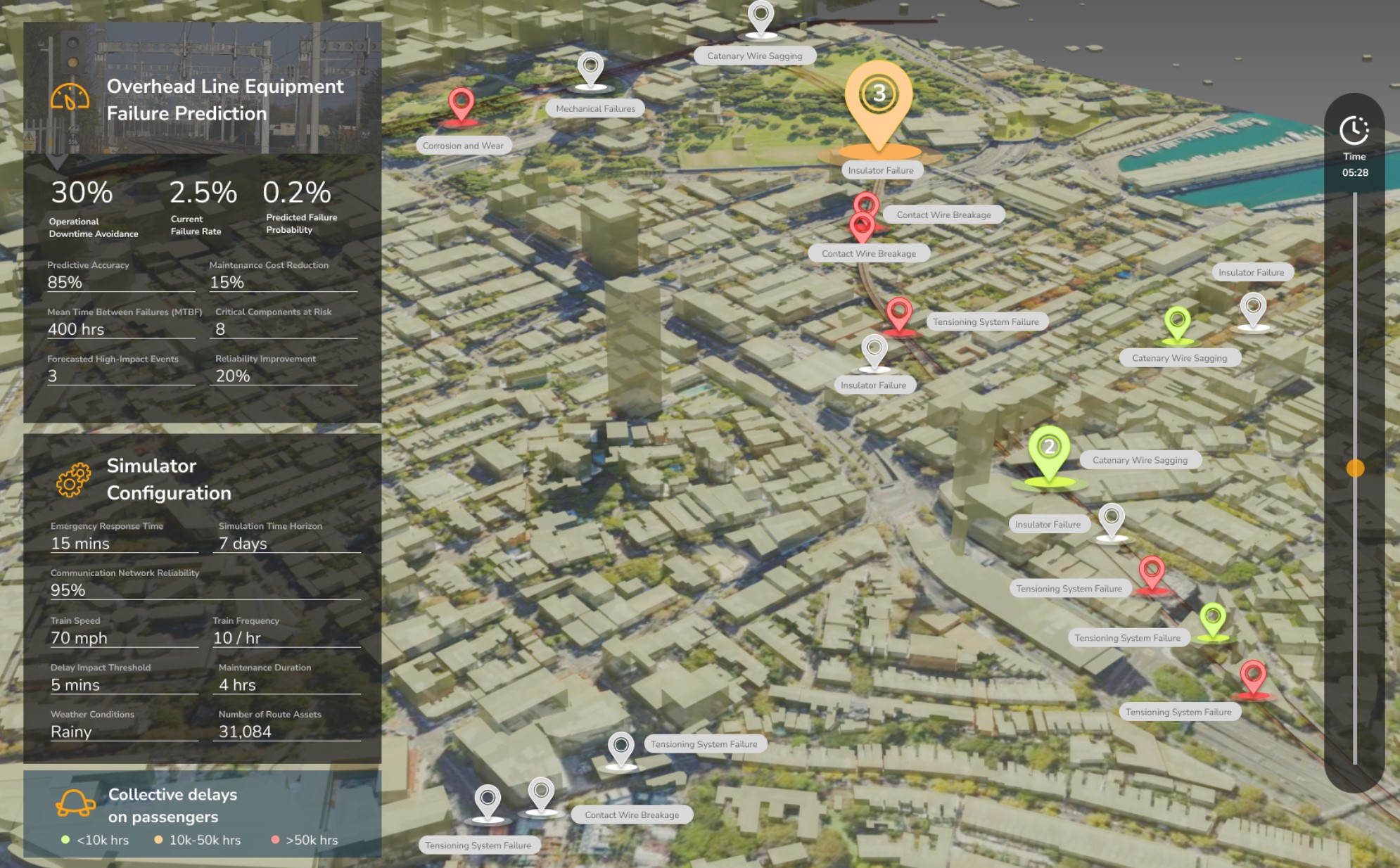by Gordon Lloyd, Jr./photos from the Lloyd Transportation Library
The Fairbanks-Morse Company of Beloit, Wis., built a line of sturdy locomotives, with actual production stretching 20 years and deliveries to railroads across the U.S., Canada, and Mexico. Our study of the careers of lesser-known Fairbanks-Morse diesel locomotives thus far (see the May 2024 Railfan & Railroad) has focused on short line and industrial F-Ms, with limited exceptions granted to Class I roads.
Chicago, Rock Island & Pacific would fill one of those exceptions. Aficionados will recall Rock Island’s propensity for quirky locomotive acquisitions, except for Fairbanks-Morse, it seems. Rock Island’s sole involvement with the Beloit builder was relegated to two H15-44 units, numbers 400 and 401, built in December 1948. The sales order was tailored to a singular assignment, Chicago commuter service. They came equipped with steam boilers and provisions for train lighting equipment. Flashy Rocket paint adorned the locomotive exteriors. One could probably predict the final outcome, but we’ll review it one more time.
ABOVE: One-half of Rock Island’s dalliance with F-M power sits in Chicago, its flashy paint still fresh. Both H15-44 units, 400 and 401, were tailored for commuter service and spent much of their F-M life moving passengers, but EMD repowering was their final attempt at longevity. —Lloyd Transportation Library
Not unexpectedly, the unusual opposed-piston engines required particular maintenance. Add in the demanding expectations associated with commuter operations and it would not be long until options for long-term maintenance were considered. Before they celebrated their 10th birthday, both were cycled through EMD where LaGrange substituted 16-567C engines. Both were removed from the roster in 1966.
Central of Georgia dominated Georgia. The 1,700-mile road also had connections in Alabama, as far west as Birmingham. Locomotive acquisitions from Alco, Baldwin, EMC, and EMD populated the roster before delivery of five H15-44 units in June 1949; they wore numbers 101–105. The quintet of opposed-piston road switchers introduced that concept to the far-flung Georgia company, but the departure from in-line or V-type engines was the big news here.
However, the F-M chapter of CofG was not closed. In 1953, CofG revisited the opposed-piston idea with an order for H12-44s. CofG identified them simply as 315–318, numbered just above the last of CofG’s Baldwins, a four-unit set of S-12s also built in 1953.
ABOVE: Coal-hauler Yankeetown Dock came to own three H12-44s. The first of its units was originally F-M demonstrator 76. That former demonstrator is shown here as YDCX 1, working with purchased-new YDCX 2 at Yankeetown, Ind., in April 1965. —F.G. Tatnall, LTL
Northwestern F-Ms
F-M sales forces secured the first of several northwestern orders in late 1947, evidenced by the delivery of Weyerhaeuser Timber’s H10-44 number 481. Graduation from Beloit occurred in April 1948; its destination was the Vail-McDonald branch in Washington.
Weyerhaeuser’s Chehalis Western signed on for two H10-44s, its 492 and 493. The units left Beloit in May and June 1949, headed for Chehalis, Wash. The railroad operated on both Northern Pacific and Milwaukee Road trackage before moving onto Weyerhaeuser rails for a final run to the log dump on Puget Sound. They operated singly, though both were equipped for multiple-unit (m.u.) operation.
In September 1949, the Pacific Northwest’s fourth F-M resident was completed. Weyerhaeuser operated a huge sawmill in Longview which required significant switching, with inbound logs, product loading, and, finally, delivery to interchange. This F-M belonged to Weyerhaeuser’s other Washington railroad, Columbia & Cowlitz. The H10-44 arrived numbered simply as D-1.
ABOVE: On a sunny February 2, 1968, Soo Line’s first F-M, H12-44 315, switches freight in Minneapolis. —Joe Stauber, LTL
The next F-M acquisition for Weyerhaeuser’s growing opposed-piston fleet was numbered as 1. Built in August 1951, the H12-44 spent much of its life at Enumclaw, Wash., about 30 miles southeast of Tacoma. This was known as the White River Branch. The singular locomotive tended to plant assignments and made daily trips to the Northern Pacific and Milwaukee Road interchange in Enumclaw, about five miles distant. It was later numbered as Weyerhaeuser 714, and spent its final years at Vail, Wash.
The sixth and final F-M in the Weyerhaeuser clan was Columbia & Cowlitz’s D-2, built in May 1956. Prior to the delivery of Weyerhaeuser’s Alco C-415 in 1968, D-2 was renumbered 700, which it wore until retirement.
Three of the Weyerhaeuser family of locomotives had extended careers beyond the timber business. When Columbia & Cowlitz acquired its C-415, H10-44 D-1 was offered to Alco for trade-in value; the locomotive was found to be in such good condition that Alco offered it for resale. Alco proponent Pacific Great Eastern (later known as BC Rail) was the unlikely suitor. Apparently, the sale offer was attractive enough to sway the unexpected transaction, truly a horse of a different color on a railroad whose allegiance was previously focused. The locomotive was never repainted from its Weyerhaeuser yellow, and did not wear any PGE or BCR identification — it toiled, not in obscurity, but in plain sight, working in the railroad’s North Vancouver Yard for about five years. It carried its original number, D-1, until BCR renumbered it as 1004…
Read the rest of this article in the June 2024 issue of Railfan & Railroad. Subscribe today!
The post The Unexpected Fairbanks-Morse: Part 2 appeared first on Railfan & Railroad Magazine.


